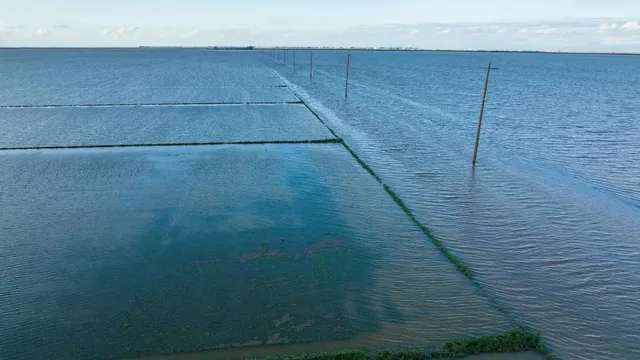- By Shivangi Sharma
- Sun, 18 May 2025 06:05 PM (IST)
- Source:JND
Tulare Lake, once the largest freshwater lake west of the Mississippi River, has made a dramatic comeback after disappearing for over 130 years. Located in California’s San Joaquin Valley, the lake has reemerged, submerging more than 94,000 acres of farmland. Historically stretching over 100 miles long and 30 miles wide, Tulare Lake was vital to the local ecosystem and indigenous communities, especially the Tachi Yokut tribe, who called it "Pa’ashi" or "Big Water."
In the late 1800s, US settlers constructed hundreds of irrigation canals to divert water away from Tulare Lake and transform the area into farmland. These efforts drained the lake, disrupted ecosystems, and led to the extinction of native flora and fauna. The converted land became a hub for agriculture, producing crops like almonds, pistachios, and cotton. Draining the lake was incentivised by land ownership promises to settlers who could “reclaim” the area.
ALSO READ:Russia Launches Largest Drone Attack Since War Began; Hits Ukraine With 273 Drones Amid Peace Talks
Nature Reclaims The Valley
The rebirth of Tulare Lake began in 2023, triggered by a combination of powerful winter storms and rapid snowmelt from the Sierra Nevada mountains. These conditions overwhelmed the man-made irrigation systems, allowing water to flood back into the natural basin.
So I went to go look at the growing Tulare Lake today - it was absolutely incredible to see. I will keep checking and reporting back on this thread. 10th and Whitley. The water was moving very swiftly. pic.twitter.com/BYe9w4wQig
— Kat B (@TheKatBee) March 26, 2023
At its peak, the revived lake covered 120,000 acres, submerging over 10 per cent of Kings County.
Environmental And Cultural Significance
The lake’s return has disrupted thousands of acres of farmland, but it has also revived a struggling ecosystem. It has contributed 3.8 million acre-feet of water to groundwater reserves in a region historically plagued by drought. Migratory birds and native fish species are returning, and the area is beginning to resemble the vibrant wetland it once was.
For the Tachi Yokut people, the resurgence of "Pa’ashi" is spiritually meaningful. The tribe sees this as an opportunity to reconnect with the land and restore ecological balance.

